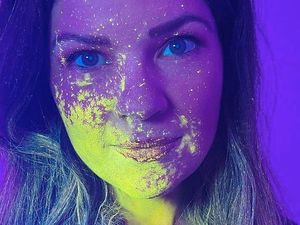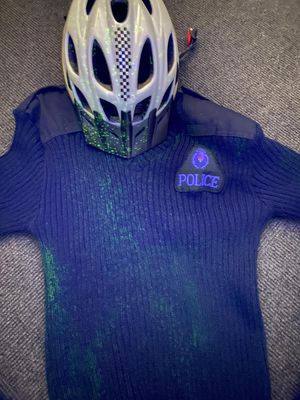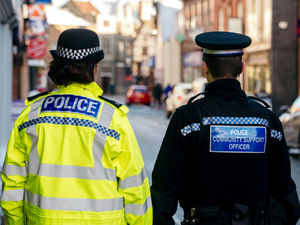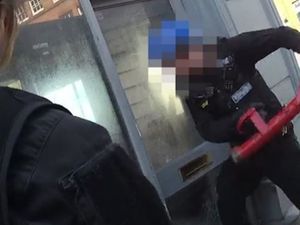Secret forensic spray set to outsmart the abusers
Pioneering forensic technology developed in Shropshire is being used to protect victims of domestic abuse.

Secret SmartWater will be offered to those at risk in Staffordshire, having proved successful in South Yorkshire.
SmartWater is a forensic liquid that shows up under ultraviolet light. The substance stays on skin for up to six weeks and on clothing for much longer and categorically links the perpetrator to the specific batch of water that was sprayed.
Telford-based SmartWater is already used by businesses to protect valuable equipment. Now, after a successful trial in Cannock, the technology will be widened to the whole county.
Women at risk, who are often protected by a restraining order, will be offered the water. It can be sprayed on to gates and door handles to prove the perpetrator has been at a property.

SmartWater is also available in hand-held cans, which can be sprayed directly on to the skin or clothes.
Staffordshire Police has led a trial of the spray, which it says offers an extra layer of protection to women. It is hoped other forces across the UK, including West Midlands Police, will take up the initiative.
Temporary Inspector Mark Burslem, of Staffordshire Police, said the trial brought real results, adding: “We hope this will help those at risk from domestic abuse and stalking feel safer in their homes as well as more secure in the possession of their valuables.
"The products will also enable officers to more readily determine the perpetrators of abuse and take appropriate action against them.
"It also acts as a deterrent. An initiative aimed at protecting victims of domestic abuse and stalking is being rolled out after a successful pilot project."
Staffordshire Police took on the trial after seeing it at work in South Yorkshire.
The first prosecution recently took place using the technology, when a man from Wakefield was caught harassing his ex-partner and breaching his non-molestation order that stipulated he must leave her alone.
When he turned up and tried to get into the house, she sprayed the coded liquid from a canister from the protection of her window.
The SmartWater helped officers to catch the man, as it forensically placed him at the scene of the crime. He was jailed for 24 weeks and given a two-year restraining order.
SmartWater provides a unique forensic code which links criminals to the scene. While not visible to the naked eye, it shows up under ultra-violet light for up to six weeks. Research shows that 80 per cent of people issued with SmartWater products reported feeling safer and 95 per cent said they would recommend it to others.
Inspector Burslem said: “During the trial period in Cannock we saw a significant reduction in the number of reported incidents and we hope to have similar results across the county. The products are offered alongside on-going support from specialist officers and partners.”
On average it costs the police about £640 to respond to a domestic abuse incident, according to the crime survey of England and Wales.
At least 20 police forces in England are meeting and sharing what they are doing to tackle domestic abuse as part of the UK’s Violence Against Women and Girls strategy.
Detective Superintendent Lee Berry, of West Yorkshire Police, who came up with the idea, said: “I really hope other police forces see what we’re doing. The more victims that we can protect and make feel safe in their own homes, the better. That’s the real success success story here.”
Rachael Oakley, the director of SmartWater’s intelligence unit, says there is no element of doubt when it comes to using forensic markings, unlike other deterrents, such as CCTV.
She said: “We are delighted to be supporting Staffordshire Police with this innovative and very effective use of our products. SmartWater is made up of a combination of rare elements that would never be found naturally anywhere else in the world. Every bottle has a different amount of those particles, making it unique.”





